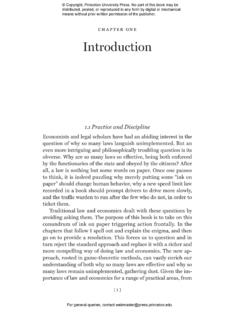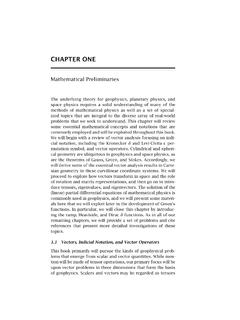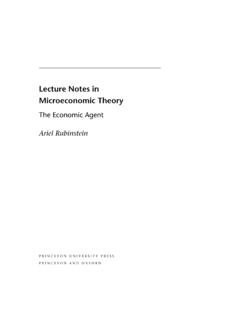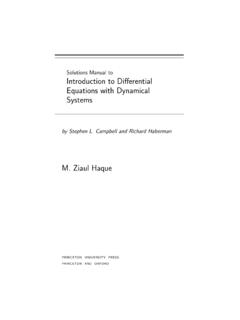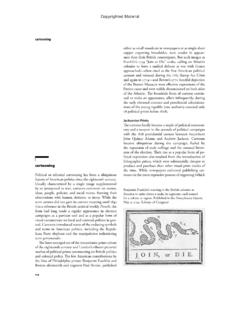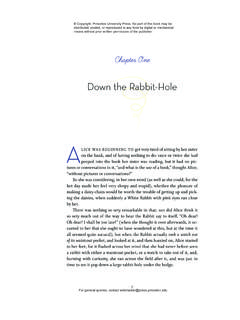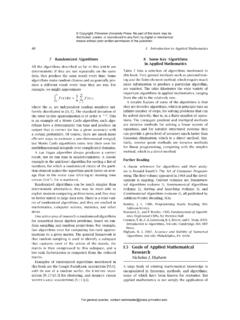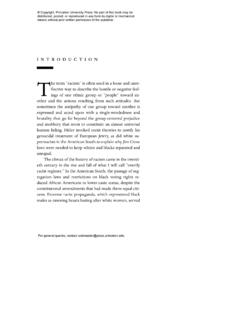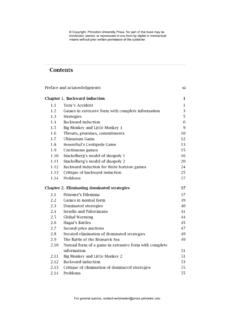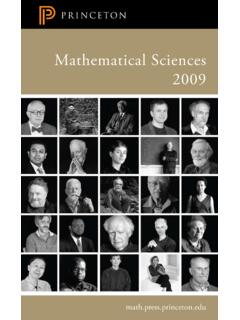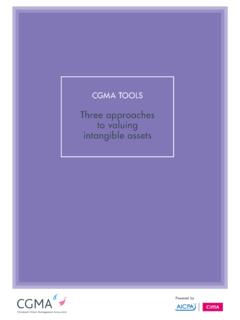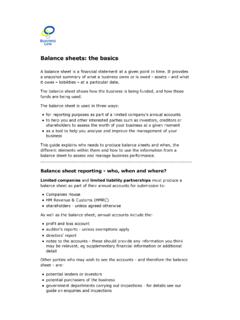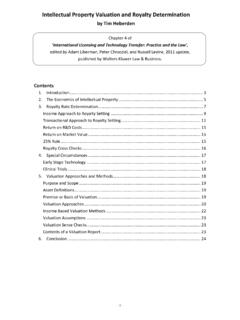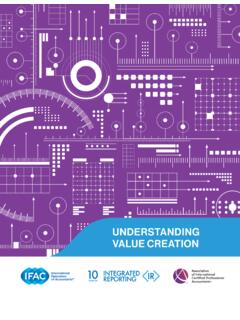Transcription of The Nature and Importance of Innovation
1 1 Copyrighted Material The Nature and Importance of Innovation Introduction This chapter begins by defining what economists mean by Innovation . Economists have focused on two main types: product and product Innovation is the act of bringing something new to the market place that improves the range and quality of products on offer: for exam ple, the Apple iPod is an Innovation compared with the Sony Walkman, which was an earlier portable device for playing music. A process innova tion is a new way of making or delivering goods or services: for example, going to visit the doctor and recording that you have arrived for your appointment by touching a screen instead of talking to a receptionist. We shall highlight the basis of such innovations in the discovery and development of many types of new knowledge.
2 We begin by outlining the whole supply chain of Innovation : from its basis in such activities as scientific invention, mathematical theorems, computing algorithms, and information gathering activity through to the widespread diffusion of this new knowledge embodied in new products and processes within the economy. Section looks at the microeconomic effects of Innovation . Using the standard microeconomic concepts of costs, demand, and consumer surplus, the outcome of both process and product Innovation are ana lyzed. Even at this stage we encounter differences depending on the availability of intellectual property rights (IPRs) and the type of market structure of the relevant industry. Section looks at the interactive Nature of Innovation , whereby sectors of the economy can act as both producers and users of innovations.
3 Section considers the important question of whether or not the private market can deliver the optimal amount of Innovation . If there is market failure, there will be less inno vation than the amount society would ideally want. Here we stress two aspects of the process of Innovation that suggest possibilities for mar ket failure. The first is that new knowledge which is created during the Innovation process is what economists term a public good and such Copyrighted Material 4 1. The Nature and Importance of Innovation goods tend to be underprovided by the private market. The second is that Innovation can create positive externalities in the form of spillover benefits to customers and other firms and these cannot be captured as revenue by innovating firms, again leading to underprovision of inno vation.
4 Section introduces the ways in which public policies, such as subsidies to research and development or the award of IPRs, can, to some degree, restore the efficiency of private firms and markets in the supply of Innovation . Finally, section briefly introduces an impor tant process whereby firms compete through Innovation , which will be discussed in more detail in subsequent chapters. What Is Innovation ? Innovation can be defined as the application of new ideas to the prod ucts, processes, or other aspects of the activities of a firm that lead to increased value. This value is defined in a broad way to include higher value added for the firm and also benefits to consumers or other firms. Two important definitions are: Product Innovation : the introduction of a new product, or a signif icant qualitative change in an existing product.
5 Process Innovation : the introduction of a new process for making or delivering goods and services. Some authors have emphasized a third category of Innovation , that of organizational change within the firm, but we see this as being naturally included within the second category, as a type of process Product innovations may be tangible manufactured goods, intangible services, or a combination of the two. Examples of recent tangible prod uct innovations that have had a very significant impact on the way people live and work are personal computers, mobile phones, and microwave ovens. Intangible products that complement these types of physical equipment include the various pieces of computer software needed to control flows of information through these devices, leading to the deliv ery of information, the supply of communication services, or the arrival of a correctly heated dinner.
6 Equally, process innovations, which are new 1 Joseph Schumpeter not only listed these three categories, but also defined as inno vation the opening of a new market, or the development of new sources of supply for raw materials (OECD 1997, p. 28). We prefer to allocate these to entrepreneurial activity rather than to Innovation . 5 Copyrighted Material What Is Innovation ? ways of making and doing things, can arise from the use of new combi nations of tangible and intangible inputs. A robotic machine to assem ble cars can deliver welding services with even greater precision than a human welder, but is only as good as its computer control system. Inherent in the above definitions of Innovation is an element of novelty. The question then arises as to how much novelty is enough to identify any change as Innovation .
7 A key issue here is to distinguish innova tion, the bringing to market of a truly novel item, from imitation, the adoption of a new technique or design that is already in the market. A product or process can be new to the firm, new to the domestic market, or new to the world market. Clearly, the last of these, global novelty, is sufficient to qualify the product or process as an Innovation . For those goods and services that are not internationally traded whether due to the Nature of the product, prohibitive transport costs, or restrictions on trade the test of being new to the domestic market is sufficient to establish that there is an Innovation within that economy. In our view, being new to the firm is an insufficient test for Innovation , as the firm in question may simply be adopting a product design, or a production method, introduced by a competitor.
8 In this book we call this the diffu sion of We define an Innovation as new to the firm and new to the relevant market. Whether this relevant market is local or global is dependent on the product or process in question and the degree to which it is traded in a competitive global or local Another feature of our two definitions of Innovation is that the prod uct or process must be introduced into the market place so that con sumers or other firms can benefit. This distinguishes an Innovation from an invention or discovery. An invention or discovery enhances the stock of knowledge, but it does not instantaneously arrive in the market place as a full-fledged novel product or process. Innovation occurs at the point of bringing to the commercial market new products and processes aris ing from applications of both existing and new knowledge.
9 Thus we can see that Innovation occurs at the kernel of a complex process, preceded by inventions and succeeded by the widespread adoption of the new 2 The Oslo Manual (OECD 1997), which was the guide for undertaking survey work on Innovation in the early phase of the Community Innovation Survey, had a baseline defini tion of Innovation that includes new to the firm, hence conceptually mixing up diffu sion and Innovation (although they do draw attention to this problem, see pp. 35 36). Hence, surveys of Innovation by firms frequently enquire about products and processes that are new to the firm, but sometimes fail to identify which of these items are also new to the market. The government reports from the Community Innovation Survey have frequently quoted the larger measure as an indicator of British Innovation .
10 3 We will discuss in chapter 2 the fact that some IPRs, such as patents, which are geographically limited in coverage, have the effect of dividing up world markets into protected trade areas. Copyrighted Material 6 1. The Nature and Importance of Innovation genre of products by customers, or the adoption of best-practice pro cesses in the majority of firms. We call this final stage diffusion, and it is clear that the benefits of Innovation to the economy and its citizens are not fully realized until this has taken place. Defining Knowledge and Technology Already we have begun to make continual reference to knowledge and technology. What do economists mean by these terms? Economically rel evant knowledge is the whole body of scientific evidence and human expertise that is, or could be, useful in the production and supply of commodities and in the invention and design of new products and pro cesses.
